A Briefing Paper has indicated that the Type 31 Frigate programme is expected by industry to exceed previously estimated costs.
The Type 31 frigate also known as the General Purpose Frigate, is a planned class of frigate of the Royal Navy that will enter service in the 2020s alongside the more high-end Type 26 frigates. It is intended that the Type 31 frigate will replace some of the Type 23 frigates.
Very little is known about the size, sensors and weaponry of the General Purpose Frigate at this stage; it is expected this will be revealed during the National Shipbuilding Strategy.
During a recent Defence Select Committee hearing, First Sea Lord Admiral Sir Philip Jones described the Type 31 as “to be a much less high-end ship. It is still a complex warship, and it is still able to protect and defend and to exert influence around the world, but it is deliberately shaped with lessons from wider industry and off-the-shelf technology to make it not only much more appealing to operate at a slightly lower end of Royal Navy operations.”
One of the contenders is the Venator-110 (pictured above), we wrote about it here.
The Briefing Paper states:
“Industry’s view is that the MOD’s CADMID acquisition model will not be able to deliver the programme at either the estimated cost (under £350 million per unit) or timescale (to replace the Type 23’s that will leave service from 2023 onwards), according to analysis by Jane’s Defence Weekly.
The consensus among industry, IHS Jane’s reports, is that the MOD “will have to pursue a streamlined, design-to-cost ship procurement that leverages off-the-shelf design and proven, low-risk technology as far as possible.”
BAE System’s Managing Director told MPs that he does not think there is any current design to meet the MOD requirements for the frigate.”
Further information regarding plans for the Type 31 frigate came to light in a speech by Admiral Sir Philip Jones, First Sea Lord and Chief of Naval Staff, delivered the Lord Mayor of London’s annual Defence and Security lecture in Mansion House.
“Given our long standing defence relationships in the Middle East, it is certain that a Royal Navy task group – centred on a Queen Elizabeth-class carrier – will regularly deploy East of Suez.
And it will be perfectly possible, should we wish, for Type 31 frigates to permanently operate from the Gulf region or from Asia-Pacific in the decades ahead.
These are examples of what we COULD do and not yet policy, and I am never complacent about the challenges we continue to face in recruiting and retaining the very best men and women in a competitive employment market.”
The original planning assumption for the Royal Navy was for thirteen Type 26 Frigates (eight ASW and five GP), replacing the Type 23 frigate fleet like-for-like.
However, it was later announced during the November 2015 Strategic Defence and Security Review by then Prime minister David Cameron that only the eight anti-submarine warfare Type 26 frigates would be ordered. The funding for the remaining five general purpose Type 26 frigates is instead to be spent on developing a new class of lighter and more affordable general purpose frigates.
Due to an expected lower cost, the government suggested it may allow an eventual increase in the total number of frigates in the Royal Navy. This general purpose frigate will be designated as the Type 31 frigate.
It is understood that the Type 26 Frigate will primarily support carrier task group operations while the Type 31 is to be deployed for a range of less high-tempo operations.




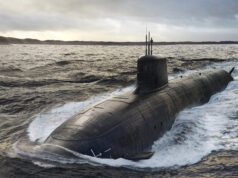
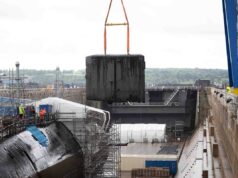
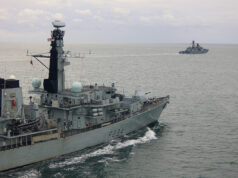
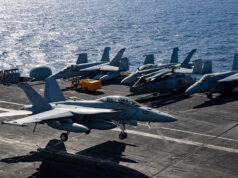

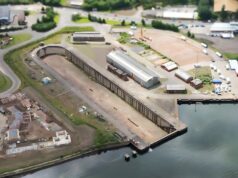
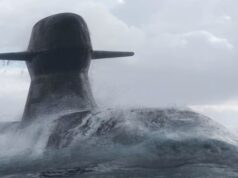


Weren’t the T26’s supposed to cost about 350-500m? Look how that turned out.
BAE are salivating already…
If the Type 31 ends up costing just £350m then it will be an incredible bargain. I sense that not only do many people not really comprehend what sort of vessel is being designed but also think that it may end up something similar to the new OPV’s. This is not the case if one looks at the three vessels currently put forward by both BAE i.e. the Cutlass and the Avenger designs together with BMT’s Venator 110 Design. These designs are substantial ships, the Venator 110’s Vital stats include:
Length (overall) 117m
Draught 4.3m
Displacement 4,000 tonnes
Maximum beam 18m
Top speed >25 knots
Range >7,000 Nautical Miles at 15 knots
Crew size 85 personnel
Total accommodation provision 106+18 personnel
Side launched RHIBs, with a third large RHIB within a stern ramp facility
Flexible mission bay
Flight deck and hangar
BAE designs are of a similar proportions and specifications.
To get these designs in perspective compare the quoted displacement of BMT’s Venator 110 at 4,000 tonnes which makes it twice the size of the biggest OPV that comes in at 2,000 tonnes. Comparisons with previous RN destroyers / frigates indicate that this design will be similar in size to the old Type 42 Destroyers at 3,500 tonnes each and approximately 65% bigger than the old Leander Class Frigates at 2,500 tonnes each. Both of BAE’s designs appear to be of a similar size.
Put another way the total displacement of the 19 No. proposed new Frigates / Destroyers i.e. 6 No. Type 45’s at 8,000 tonnes each, 8 No. Type 26’s at 7,000 tonnes each and 5 No. Type 31’s at 4,000 tonnes each equates to a total displacement of 124,000 (approx.) tonnes for all the proposed ships.
What this clearly demonstrates is that, in displacement terms, the current combined build tonnage of all the three new types of new Frigates & Destroyers is akin to building 35 No. of the old Type 42 Destroyers OR 50 No. of the old Leander Class Frigates, which in turn indicates how large this build project really is and the amount of potential clout that the RN will be receiving when/if it is completed. Obviously, whilst there is a downside i.e. the reduction in hull numbers this is still a very welcome and significant addition to the RN’s fighting ability.
Er, displacement doesn’t necessarily equal fighting ability, nor does it have all that much relationship to cost. What sort of weapons and systems are going to be fitted? That’s what really matters.
By comparison, what is the expected cost of a Type 26 frigate? This seems a bit expensive for a ship which has yet to be designed, and the cost for which will most likely rise.
Not a lot then really.
The UK needs to build up its naval strength, now that the Russians are operating more and more near our shores. In truth, he cat is out of the bag, and we can expect in the coming months and years, more demonstrations of military freedom by Russians forces.
As I pointed out before my comments were deleted, this is not new news. Both Janes and Warship World reported over two months ago that the target cost of the Type 31’s had been pegged at 350 million.
Censorship is never pretty George.
I wrote the article, I don’t look after comment moderation but please be as condescending as you wish.
Any idea re as to what offensive weaponry the ship’s will carry?
I’m a little concerned that the ram may be coming back into RN tactical thinking..
Over priced and way too late to be marketable. Call me Dave the gift that keeps giving. NSS Now
So, looks like we’ll end up with T26 Lite.